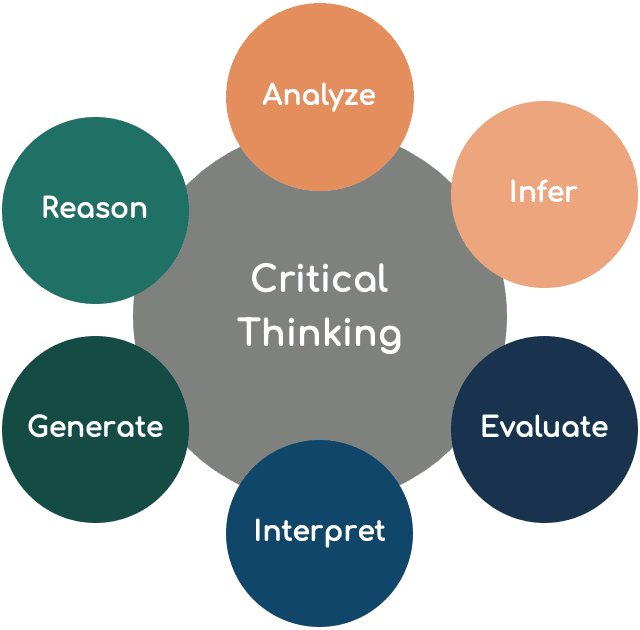Critical Thinking
The final step in the reading ladder takes content beyond the text. Developing critical thinking skills applies not solely to the reading process, but to life as a whole. Learners are constantly challenged to think independently and, thus, critically in and out of the classroom. The good news is that critical thinking is a teachable skill, so let’s explore a few steps that we can take to teach our learners how to exercise their ability to think critically!
By Definition

First and foremost, what are critical thinking skills? According to The Foundation for Critical Thinking, “Critical thinking is the intellectually disciplined process of actively and skillfully conceptualizing, applying, analyzing, synthesizing, and/or evaluating information gathered from, or generated by, observation, experience, reflection, reasoning, or communication, as a guide to belief and action.” When it comes to reading between the lines, learners require and deserve explicit instruction in how to apply these levels of cognition. As you can see, the list of higher-order thinking skills can seem overwhelming! Let’s start by definition the key elements of critical thinking skills:
Analyze – the gathering, interpretation and analysis of information.
Infer – drawing conclusions based on the activation of prior experience/knowledge as well as current data.
Evaluate – the ability to observe/notice and predict opportunities, problems and solutions.
Interpret – to explain the meaning of information.
Generate – to produce or create something based on higher-order processes.
Reason – to think, understand and judge based on a process of logic.
Use Your Resources
Although we recognize that everyone learns these processes differently than another, there are a couple of key strategies that can be generalized to reach most, if not all, learners: using mental imagery and learning how to question.
Each of the aforementioned higher order thinking skills depends on a secure foundation of how to learn, process, recall and retrieve information through visual and auditory channels. The basis of this ability to comprehend language is the awareness of your thinking patterns which typically take the form of mental imagery. Tapping into the brain’s ability to conjure images allows learners to connect high level thinking abilities to a grounded foundation of mental representations. Sprinkling in sensory based language at home and in the classroom directs learners to use their imagery as a springboard for thinking critically. For example, asking questions such as, “What do you picture might happen next in the story?” “How do you picture the main character might (feel, solve the problem, etc.)” and so forth, truly helps teach critical thinking in a relatable way.
Has your learner ever asked you “Why?” repeatedly? Well, guess what? That seemingly irksome habit is actually exactly what they need to do to develop their critical thinking skills! Teaching learners to ask questions and seek support when they are unsure is important, especially when guiding learners to also questioning others’ way of thinking. Questioning assumptions helps learners to take perspective and to discover the depths of the questioning process. In addition to helping learners refine their ability to question, we must also help them evaluate, reason, connect and analyze information using logic and prior knowledge. If something does not make sense to learners, they must first question themselves, then use logic to reframe their thinking. Inquiring about others’ thought processes diversifies a learner’s ability to broaden their thinking scope, opening up a world of higher-order thinking possibilities.
Sprinkle Away
As is true when learning new things, it is easiest to break down the critical thinking umbrella into smaller, more manageable chunks so that you, as educators and parents, are able to organically sprinkle in the strengthening of these skills throughout your daily activities. Comparing similar and/or contrasting items, analyzing analogies, exploring possible outcomes/solutions (Would You Rather is a great way to have fun doing so!) and discussing angles of a conversation are all effective ways to make critical thinking part of your learner’s everyday life. By helping your learner connect their thinking to mental pictures and ask questions often, they will feel more equipped to rise to the challenge of using their higher order thinking skills across all environments!










